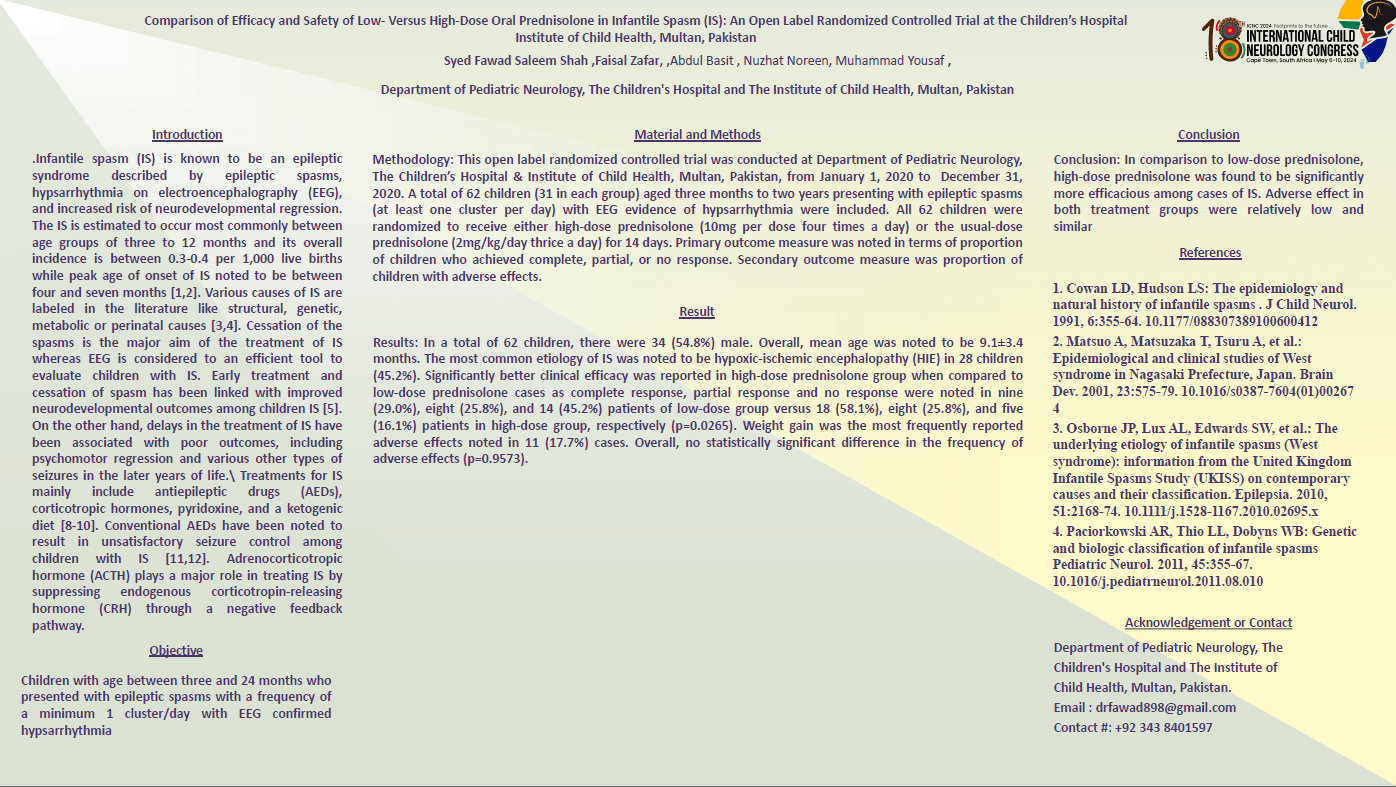Comparison Of Efficacy And Safety Of Low- Versus High-Dose Oral Prednisolone In Infantile Spasm (IS)
Background: Infantile spasm (IS) is an epileptic syndrome characterized by epileptic spasms, hypsarrhythmia on electroencephalography (EEG), and high risk of neurodevelopmental regression.
Methodology: This open label randomized controlled trial was conducted at Department of Pediatric Neurology, The Children’s Hospital, Multan, Pakistan, from January 1, 2020 to December 31, 2020. A total of 62 children (31 in each group) aged three months to two years presenting with epileptic spasms (at least one cluster per day) with EEG evidence of hypsarrhythmia were included. All 62 children were randomized to receive either high-dose prednisolone (10mg per dose four times a day) or the usual-dose prednisolone (2mg/kg/day thrice a day) for 14 days. Results: In a total of 62 children, there were 34 (54.8%) male. Overall, mean age was noted to be 9.1±3.4 months. The most common etiology of IS was noted to be hypoxic-ischemic encephalopathy (HIE) in 28 children (45.2%). Significantly better clinical efficacy was reported in high-dose prednisolone group when compared to low-dose prednisolone cases as complete response, partial response and no response were noted in nine (29.0%), eight (25.8%), and 14 (45.2%) patients of low-dose group versus 18 (58.1%), eight (25.8%), and five (16.1%) patients in high-dose group, respectively (p=0.0265). Weight gain was the most frequently reported adverse effects noted in 11 (17.7%) cases. Conclusion: In comparison to low-dose prednisolone, high-dose prednisolone was found to be significantly more efficacious among cases of IS. Adverse effect in both treatment groups were relatively low and similar.
Faisal Zafar
Children's hospital
Pakistan
Fawad Saleem
Children's hospital
Pakistan
Abdul Basit
Children's hospital
Pakistan
Nuzhat Noureen
Children's hospital
Pakistan

Fawad Saleem
Children's hospital
Pakistan